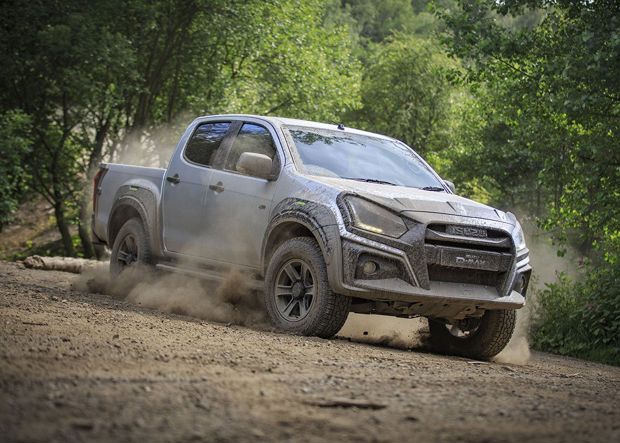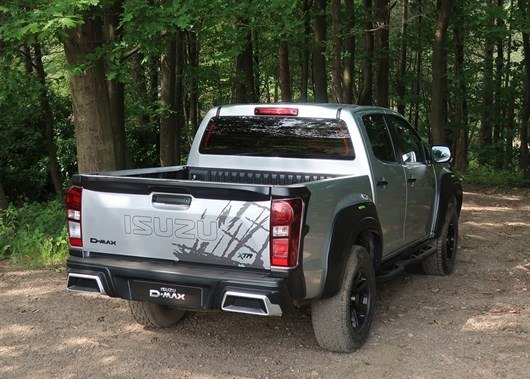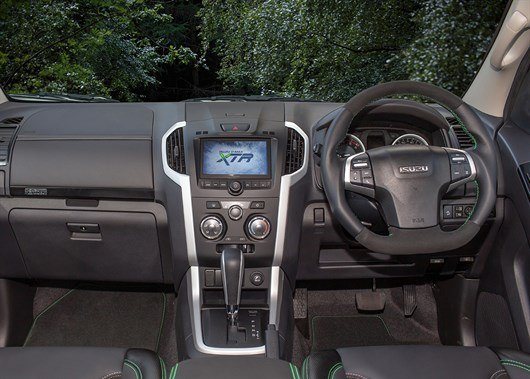Driven: Isuzu D-Max XTR

Designed for drivers who use their pick-up for both business and leisure, the D-Max XTR is a bold attempt to broaden Isuzu's market by rivalling the premium looks and performance of the Ford Ranger and Nissan Navara. However, while the XTR offers something genuinely extreme and exciting, its challenge is derailed by a distinct lack of power.
Isuzu is redoubling its efforts in the pick-up market in 2019, as it looks to increase sales and crack the lucrative lifestyle market by shaking off its farmers' favourite tag. This change of direction is spearheaded by the XTR, which sits the between Blade and Arctic Trucks version of the D-Max.
It boasts an eye-catching design, with bumper guards, bonnet protector and 32-inch tyres transforming Isuzu's usually unassuming workhorse into a snarling and aggressive thoroughbred that wouldn't look out of place alongside the Horsemen of the Apocalypse.
There are some important upgrades under the metal too, with increased ground clearance - hiked up to 250mm - improved suspension and high performance brakes. Isuzu tell us the Pedders suspension and brake system is bespoke for the XTR - right down to the Kevlar ceramic front pads.

The suspension and bodywork upgrade hasn't curtailed the D-Max's load moving potential, however, with the XTR retaining its 3.5 tonne towing limit and maximum payload of 1.1 tonnes. The standard 1.9-litre turbodiesel also remains, unchanged, with 164PS and 360Nm of torque from 2000 - 2500rpm. And it's here that the XTR loses some of its extreme off-roader appeal.
Both the Ford Ranger Wildtrak (200PS) and Nissan Navara N-Guard (190PS) are more powerful. They also generate 100Nm more torque, which means you get a lot more low gear pull.
The D-Max XTR does have a few tricks up its sleeve, with the key one being the additional ride height and upgraded suspension. This means the XTR has the ability to visit places where its rivals would quickly become beached on rocky or muddy terrain. But there's no hiding from the fact that the XTR lacks the power to rival the very best in class.
Compared to the Ranger, for example, the D-Max's engine has to be worked extremely hard to find the revs that will encourage it to scamper up steep gravel roads or through sticky bogs. And the lack of a locking rear diff makes the XTR vulnerable to slipping when driving over wet rocks or mud.

On-the-road, the typical pick-up comfort issues are obvious. As with the standard D-Max, the XTR uses leaf suspension at the rear and this transfers a lot of bumps into the cabin. Body travel in the corners is also extensive and (again) both the Ford and Nissan are more comfortable and refined on a long journey.
Prices for the D-Max XTR start at £33,999 and rise to £36,149 for the highest spec version, with touchscreen navigation and DAB audio (pictured above). And that's before the VAT. However, while the XTR trim adds smart part leather seats and green logos, it's no match for the quality and car-like tech you get with the D-Max's key rivals.
For some buyers, the XTR's bespoke set-up and bold styling will be enough to justify its sky high price tag. And to be fair to Isuzu, there's nothing on sale from the mainstream pick-ups manufacturers that matches the D-Max XTR. There are also no aftermarket conversions firms that can match Isuzu's five-year-warranty/125,000 mile warranty.
This means the D-Max XTR sits in a small niche that will only appeal to off-road enthusiasts who want a pick-up that will truly stand out from the crowd. However, unless you plan to utilise the XTR's off-roading prowess to the max on a weekly basis, you may be better choosing one of its less extreme rivals.
Essential stats:
Prices start from: £33,999 (for six-speed manual), claimed NEDC economy: 40.4mpg (36.2mpg for auto): CO2 emissions: 183g/km (205g/km for auto), payload: up to 1139kg, towing capacity: 3500kg, length: 1485mm, width: 1530mm (excluding mirrors), ground clearance: 250mm, engine: 1898cc four-in-line turbodiesel, power output: 164PS @3600rpm, 360Nm @2000-2500rpm.

